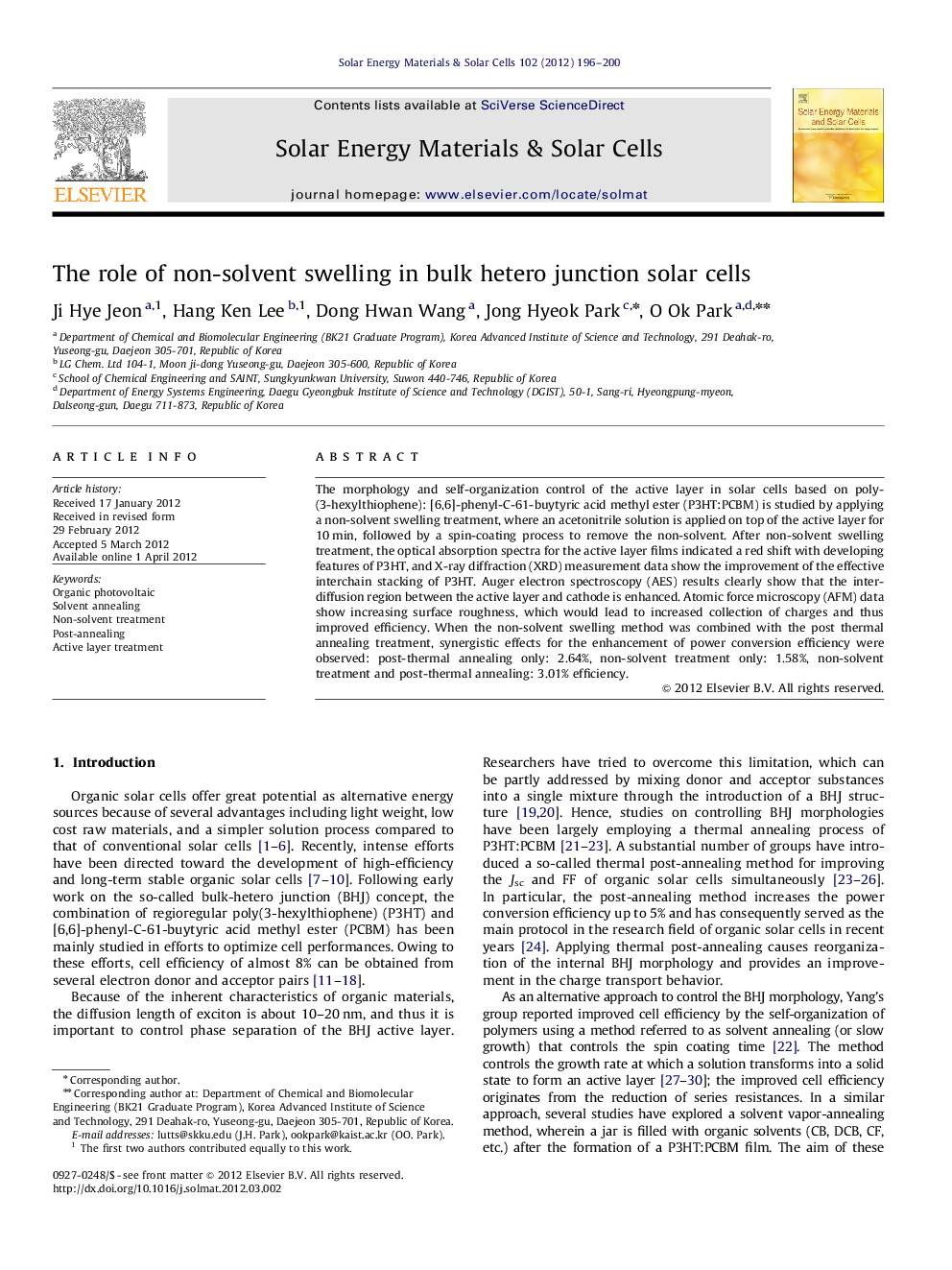| Article ID | Journal | Published Year | Pages | File Type |
|---|---|---|---|---|
| 78572 | Solar Energy Materials and Solar Cells | 2012 | 5 Pages |
The morphology and self-organization control of the active layer in solar cells based on poly(3-hexylthiophene): [6,6]-phenyl-C-61-buytyric acid methyl ester (P3HT:PCBM) is studied by applying a non-solvent swelling treatment, where an acetonitrile solution is applied on top of the active layer for 10 min, followed by a spin-coating process to remove the non-solvent. After non-solvent swelling treatment, the optical absorption spectra for the active layer films indicated a red shift with developing features of P3HT, and X-ray diffraction (XRD) measurement data show the improvement of the effective interchain stacking of P3HT. Auger electron spectroscopy (AES) results clearly show that the inter-diffusion region between the active layer and cathode is enhanced. Atomic force microscopy (AFM) data show increasing surface roughness, which would lead to increased collection of charges and thus improved efficiency. When the non-solvent swelling method was combined with the post thermal annealing treatment, synergistic effects for the enhancement of power conversion efficiency were observed: post-thermal annealing only: 2.64%, non-solvent treatment only: 1.58%, non-solvent treatment and post-thermal annealing: 3.01% efficiency.
Graphical AbstractFigure optionsDownload full-size imageDownload as PowerPoint slideHighlights► We present the morphology control of the active layer applying a non-solvent swelling treatment. ► The swelling method was applied to solar cells, resulting in increased crystallinity of P3HT. ► When the swelling method was combined with thermal treatment, synergistic effects were observed.
